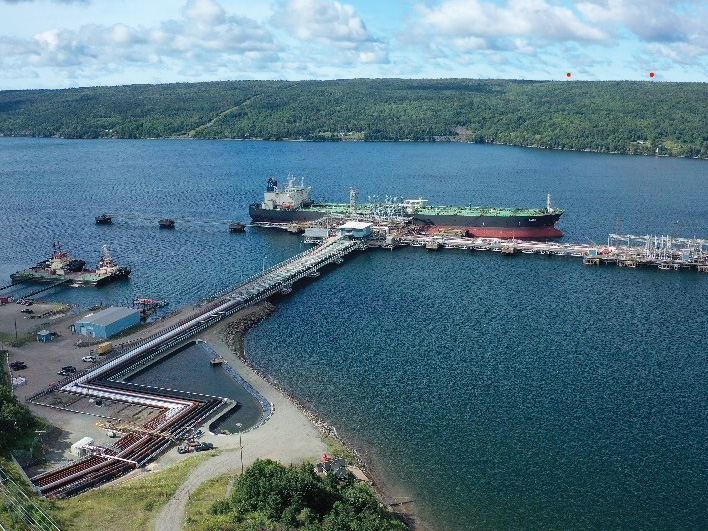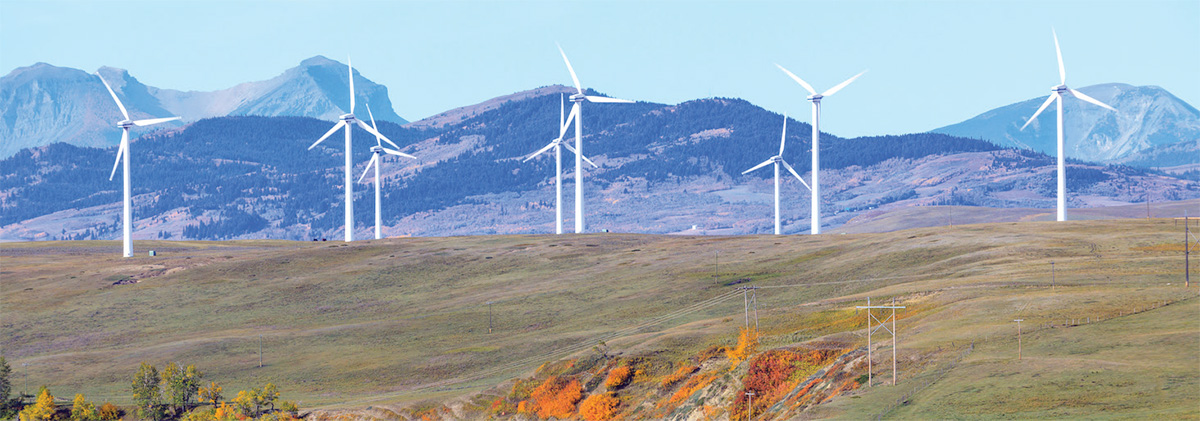The second largest country in the world after Russia, Canada benefits from vast areas offering abundant wind resources with significant potential for the expansion of wind-generated power. While some of the highest quality areas are along coastlines and offshore, none of the estimated three dozen offshore projects today have reached the approval or build phase. The development of coastal wind farms on the Great Lakes and elsewhere has been deterred especially by environmentally influenced regulatory issues and legal proceedings. For the present, only Nova Scotia, on the Atlantic Coast, is seriously poised to become an important player in offshore energy.

Optimistic Outlook for Onshore Wind Projects
But in the case of inland onshore projects, the outlook is highly positive - with wind farms spreading from the eastern and western regions to the Far North. More is on the horizon with reports that the 2023 federal budget being unveiled soon will accord major priority and investments for accelerating Canada’s energy transition.
“I am happy to see that, across Canada, the sector grew by an impressive 10.5% this year,” said Phil McKay, CanREA’s Senior Director, Technical and Utility Affairs. “Canada now has an installed capacity of more than 19 GW of utility-scale wind and solar energy, having added more than 1.8 GW of new generation capacity in 2022.”
Western Canada accounted for 98% of Canada’s total growth in 2022, with Alberta adding 1,391 MW and Saskatchewan adding 387 MW of installed capacity this year. Quebec contributed 24 MW to the total growth for 2022, Ontario 10 MW, and Nova Scotia 2 MW.
The 2022 growth of 1.8 GW was significantly larger than in 2021, although it does not meet the growth rate called for in CanREA’s 2050 Vision, Powering Canada’s Journey to Net-Zero, which states that Canada needs to deploy more than 5 GW of new wind and solar energy every year to meet its commitment to net-zero GHG emissions by 2050.

Western Canada Capacity Growing
Wind energy alone grew by 7.1% (1 GW) in 2022 to a new total of more than 15 GW of installed capacity. In this regard, Western Canada blew ahead of the pack, thanks to big growth in Alberta (nearly 605 MW) and Saskatchewan (377 MW), as well as some (24 MW) of new wind capacity in Quebec.
Across Canada: As of December 31, 2022, Ontario had more than 5.5 GW in total installed wind capacity, powering nearly 1.5 million homes. Quebec had nearly 4 GW. Alberta had a new total of 2.6 GW, Saskatchewan had 804 MW of installed wind capacity, and Nova Scotia had 616.
Among Canadian ports, the Port of Thunder Bay on the tip of Lake Superior, is continuing to develop its special vocation as a strategic gateway to handle import wind energy components destined for wind farms in Western Canada. “Our abundant laydown area is an asset for cargo staging and storage, as is direct on-dock access to the CN and CP railway network and the Trans-Canada Highway,” said Chris Keikkinen, director of business development.”
“Wind continues to be a leading opportunity for our marine business in 2023,” he told the American Journal of Transportation. Adding, “Keep an eye out for some oversized shipments at the port this year.”
St Lawrence Connection
Interestingly, located in the heart of the St. Lawrence/Great Lakes shipping corridor, one finds at Trois-Rivières (mid-way between Montreal and Quebec City) a leading manufacturer of wind towers in North America: Marmen Inc. A subcontractor for original equipment manufacturers (OEM) specializing in high-precision products, this enterprise operates two plants in Trois-Rivières and Matane in Quebec and one plant in Brandon, South Dakota which facilitates transportation through the central United States by truck or rail.
In an interview, Mathieu Giroux, director of purchasing and supply for Marmen Inc., enthusiastically noted: “We consider ourselves very lucky to be in a port-city on the shores of the St. Lawrence River. The St. Lawrence is one of the most important waterways of the world because it offers access to many markets. The port allows us to penetrate markets when the components involved are very heavy or ultra-dimensional.”
Marmen’s chief client base in Canada and the United States covers diverse markets from wind and hydropower to steam and gas turbines.
In Canada, the provinces of Alberta, Saskatchewan, Ontario, and Quebec are important wind energy markets. “We have been in the tower market for 20 years,” Giroux recalled. “This is a market that will continue to expand. The towers we manufacture here are transported on all modes depending on the client. Much is moved by truck or by rail via the Quebec Gatineau Railway (QGRY). For certain markets, the latter is the most practical since there can be more weight and dimensional constraints.”
Looking at some recent wind projects in the works across Canada, the Canadian government, through its Arctic Energy Fund, has invested in the Haeckel Hill Wind Project in Whitehorse, Yukon where four wind turbines are slated to be operational by November 2023.
At Inuvik in the Northwest Territories, a 3.5MW wind turbine and other components delivered by barge last fall is destined to reduce local diesel consumption by 30% when the Inuvik Wind Project is scheduled to become operational later this year.
$6 Billion Green Energy Project in Nova Scotia
But elsewhere in Canada, as mentioned earlier, Nova Scotia has commanded considerable attention on both the offshore and inland fronts.
Early in February, EverWind Fuels Company of Halifax received environmental approval for the initial phase of its planned C$6 billion, 1 million tonnes per annum green hydrogen and green ammonia production complex located in Point Tupper, Nova Scotia. It is touted as the first such industrial-scale project in North America.
EverWind acquired the Point Tupper terminal in early 2022. Its existing, operational marine terminal is the deepest ice-free berth on the East Coast of North America. The site has capacity to produce more than 10 million tonnes per year of green ammonia. The site, with approximately $1 billion of existing storage and logistics assets, is regarded as an ideal hydrogen hub and is connected via critical infrastructure including rail, road, and pipelines, in addition to its port facility.
EverWind remains on track to deliver green ammonia to German off takers, E.ON and Uniper, by 2025, achieving the goals outlined in the historic Canada-Germany Hydrogen Alliance signed in August of 2022.
The environmental approval from the provincial authorities is a significant milestone for start-up EverWind and its First Nations equity partners, Membertou, Paqtnkek (Bayside Development Corporation) and Potlotek. It paves the way for construction to commence in the first half of 2023. Last December, EverWind was the successful proponent in a Provincial request for applications for Crown land and is now exclusively applying for leases on 137,000 acres of land to develop a 2GW onshore wind farm in northeast Nova Scotia. The onshore wind farm is expected to power the second phase of its green hydrogen production facility by 2026.





